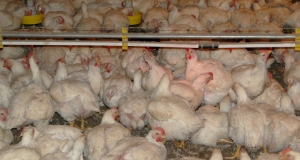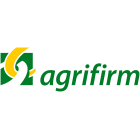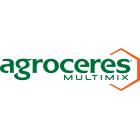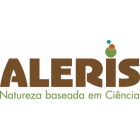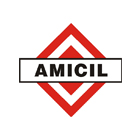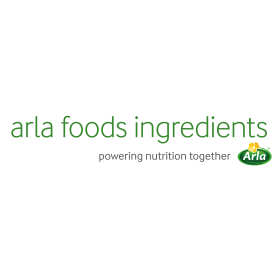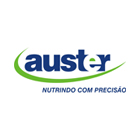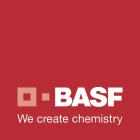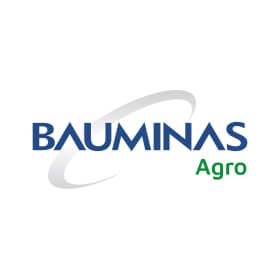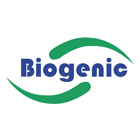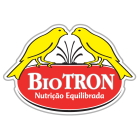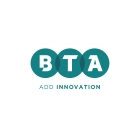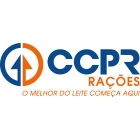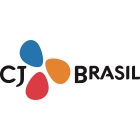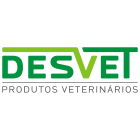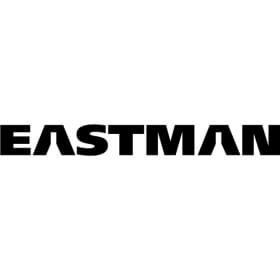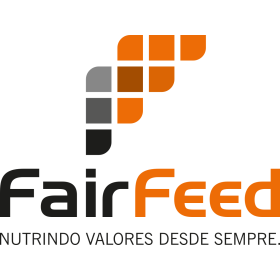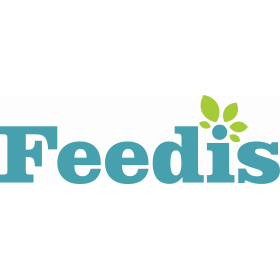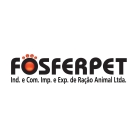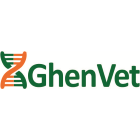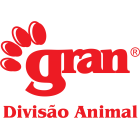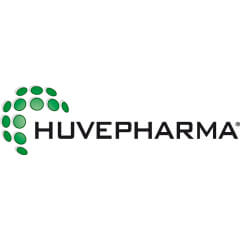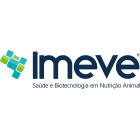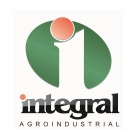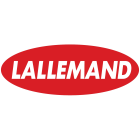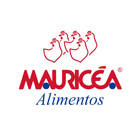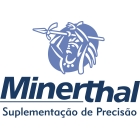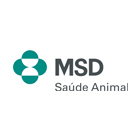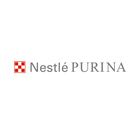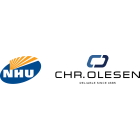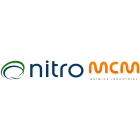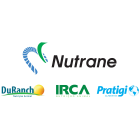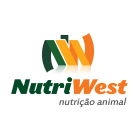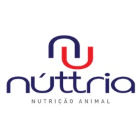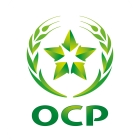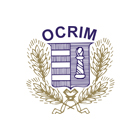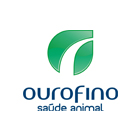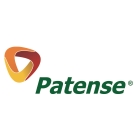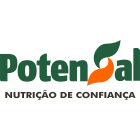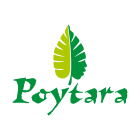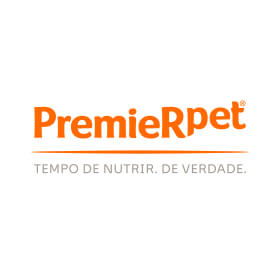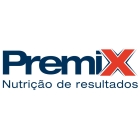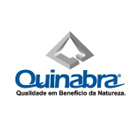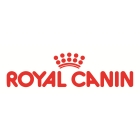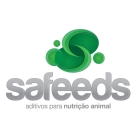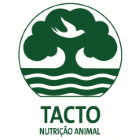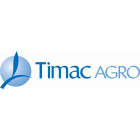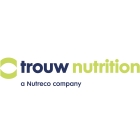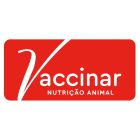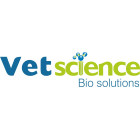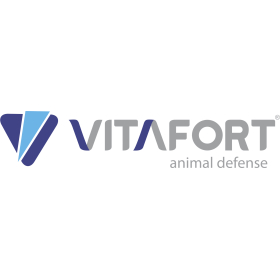9 December 2014 – US food giant Tyson recently reported a sharp increase in its sales of chicken meat produced without the use of antibiotics. Introduced in 2013, Tyson’s antibiotic-free chicken brand still represents a small part of the company’s overall sales, but offers significant scope for growth. Rival food producer Perdue has also bet on a boom in the antibiotic-free market by announcing plans to discontinue its use of antibiotics at its chicken hatcheries.
Driven less by regulatory pressure than by consumer reaction to the issue of antibiotic resistance, these decisions mark a significant change in an industry which has been relying on antibiotics for more than 70 years. According to the FDA, the US livestock sector consumed more than 30 million pounds of antibiotics in 2012, representing an 8% increase compared to the previous year. China’s record is even worse: every year, its farmed animals consume more than 220 million pounds of antibiotics.
But consumers – whether American, European or Asian – are increasingly worried about what they consider as a widespread use of antibiotics in animal feed, and its possible direct consequences on human health. A 2012 survey conducted in the US by Consumer Reports showed that 72% of respondents were extremely or very concerned about the overuse of antibiotics in animal feed, including the potential to create “superbugs” that are immune or resistant to antibiotics. Asked whether they would be willing to pay more for meat raised without antibiotics, more than 60% of respondents said “yes”.
What are the implications of these findings for the global feed and meat industry? What is actually being done to promote responsible use of antibiotics? And if the antibiotic era is really drawing to an end, what alternatives does the industry have? Feedinfo News Service asked these questions to a distinguished panel of experts representing the five continents of the world.
This roundtable will be published in three parts. Part One (today) provides a global picture as well as a region-by-region overview of antibiotic usage in animal diets and what is in place to improve the responsible use of antibiotics. Part Two (to be published tomorrow, 10 December 2014) will provide insight into the communication efforts in place or to be made to promote the responsible use of antibiotics. Finally, Part Three (to be published on 11 December 2014) will highlight the speakers’ opinions with regard to alternatives to antibiotics.
Representing Europe: Peter Borriello (Chief Executive Officer, Veterinary Medicines Directorate, UK);
Representing North America: Cyril Gay (National Program Leader for Animal Health and Safety, USDA/ARS);
Representing Africa: Delia Grace (Program Leader Food Safety and Zoonoses, International Livestock Research Institute, Kenya);
Representing Asia: Kyung-Woo Lee (Assistant Professor, Department of Animal Science and Technology, KonKuk University, South Korea);
Representing South America: Ariovaldo Zani (Chief Executive Officer, Brazilian Feed Industry Association).
[Feedinfo News Service] According to Dr. Margaret Chan, director-general of the World Health Organization (WHO), the world is heading to a “post-antibiotic era”. Curbing antibiotic usage in livestock and poultry production has always been on the agenda. But in recent months it has truly become a global and public issue with a lot of spotlight on emerging markets. Simply put, what do you think is going on?
[Delia Grace] We are in the midst of a revolution, the livestock revolution. There is a huge increase in demand for livestock products and nearly all of this is coming from developing countries. On any given day there are 37 billion domestic animals in the world and 31 billion of them are in developing countries. In response to demand, livestock systems are starting to intensify, that is, they are keeping more animals, closer together and using more inputs. This is pushing up antibiotic use and with it concerns of emergence of antibiotic resistance. And that makes people worry more about the roles of this massive increase in livestock, the massive intensification and increase in inputs, and what this could mean for AMR.
[Peter Borriello] There has become an increasing awareness of the proximity of a post-antibiotic era due to emergence of a few pathogens resistant to nearly all conventional antibiotics. This increased awareness has caused concern and anxiety, particularly about use of antibiotics for purposes other than treatment of people. The issue has also become a focal point for those against rearing animals for meat and/or against intensive farming. The spotlight is on emerging markets due to the general lack of regulation or effective enforcement, and use of antibiotics for growth promotion.
[Cyril Gay] Antibiotics are undoubtedly one of the most important medical discoveries of the 20th century. They have been used effectively for the last 70 years in eliminating some of the most important diseases affecting people and animals. The loss of antibiotics due to antimicrobial resistance is potentially one of the most important challenges the medical and animal health communities will face in the 21st century. We need to be mindful that this is a One Health issue and both WHO and the World Organization for Animal Health (OIE) have joined forces and are calling on countries worldwide to take action against the rising threats from antibiotic-resistant bacteria. The growing concern of losing medically important antibiotics to treat devastating diseases such as tuberculosis and staph infections due to multi-resistant bacteria has resulted in several initiatives that are keeping this issue at the forefront. In 2011, the European Commission issued an action plan against the rising threats from antimicrobial resistance, and the United States just issued on September 2014 the President’s National Strategy for Combating Antibiotic-Resistant Bacteria. Both of the initiatives include recommendations on the responsible use of antibiotics and importantly, specific recommendations for the research and developing of alternatives to antibiotics.
[Kyung-Woo Lee] I think that there will be an increasing global pressure on the use of in-feed antibiotics which are still used in animals’ diets. In any event, we are heading towards a complete ban on antibiotics used as growth promoters or even for therapeutic purposes in animal production. As WHO stressed out, governments around the world and stakeholders (i.e., livestock & feed industry, consumer representatives, pharmaceutical companies, etc) should take the antibiotic-resistance matter very seriously, and try to work together on solving the current issue concerning the use of antibiotics by the animal industry.
[Ariovaldo Zani] First of all, it’s important to emphasize that antibiotic resistance is a natural phenomenon and resistant bacteria have been found in places untouched by man – in organic production farms of bean sprouts, in water sampled from rivers, in oceans, in wild pigs and baboons and even in samples of 30,000 year-old permafrost. The hypothesis of a causal relationship between the use of AGP in feed and the increasing incidence of resistant bacteria in humans hasn’t yet been scientifically proven, despite a large number of epidemiological studies performed over time.
Europe banned the use of avoparcin in animals, associating it hypothetically to vancomycin-resistant bacteria in humans (even if the causality has never been proven). Conversely, countries where avoparcin is still used have never registered vancomycin resistance. In other countries, vancomycin resistance persisted, even after a decade-long ban on avoparcin, which allows us to believe that the substance might have been misused in human clinical practice.
People around the world, including those living in developing countries, are concerned about the rapid changes occurring in animal farming. The animal production system has changed significantly over the last 30 years due to a reduction in the number of farmers, or due to modern technology. These changes have affected everyone and generated enthusiasm among those leading the change, and anxiety among those left out.
[Feedinfo News Service] In some markets there is an obvious lack of strict regulatory standards (e.g. Indian Standards’ poultry feed specifications recommend not using antibiotics as growth promoters in feed – but these standards are not mandatory). According to you what are the main reasons for this absence of strict implementation of laws?
[Peter Borriello] Generally in countries where there are no controls or lax implementation of controls, these are mirrored for human use of antibiotics. The overall perception is one of access to treatment being of higher priority than control of distribution and dispensing. This fosters an acceptance of resistance as a lower priority problem. It is also the case that in many instances the infrastructure for a prescription-only antibiotics policy and state distribution system is absent.
[Delia Grace] Firstly, this is not just about antibiotic use. It is almost characteristic of many countries that regulations – whether about driving, food safety, fire hazards – are not followed strictly. Why should antibiotics be an exception? There are several factors underneath this rule-breaking behavior. One is just ignorance: many people are well-intentioned but ill-informed. Another is lack of resources for rule enforcement. But, especially in poor countries, many farmers simply cannot afford to follow the rules. A dairy farmer in Kenya may depend on milk for food for her children; if she throws away the milk because of a withdrawal period, no-one is going to step in to feed her family. She literally has no option.
When working with the livestock sector in developing countries, we find that the ‘control and command’ system almost never works. It can even create perverse incentives. What is better, is to work with the stakeholders, including those whose behavior is problematic, and identify incentives so that people change their behavior because of perceived benefits and not threats.
[Kyung-Woo Lee] In Korea, the amount of in-feed antimicrobials has been significantly reduced since 2005 due to the implementation of preventive measures tackling the occurrence of antibiotic-resistance bacteria. Currently, only nine anticoccidials (no antibiotics in diets) can be introduced into animal’s diets at the feed factory! Meanwhile, antibiotics for growth promotion cannot be used in animal diets.
Initially, the industry strongly resisted the government’s plan to introduce a strict ban on in-feed antibiotics. The industry justified their stand by saying that the industry in USA is still using antibiotics in complete feeds. Despite these complaints, the government decided to implement the regulation without further negotiation with the industry. Korea’s animal drug regulation is less lenient than that of the USA, as Korea followed the EU model on the use of in-feed antimicrobials.
[Ariovaldo Zani] The countries which have yet to adopt strict rules on antibiotics are probably used to relying on scientific indicators resulting from a quantitative risk analysis, which helps them decide which AGP to ban.
The questions these governments are probably asking themselves are the following: is there a problem of infections by antibiotic-resistant bacteria in humans in our country? What are the most common infections with antibiotic resistant bacteria? What are the main sources of infection by antibiotic-resistant bacteria in humans?
In Brazil, officials recently banned the use of critically important antimicrobials (cephalosporins of third and fourth generations, macrolides, quinolones and fluoroquinolones) used to improve feed efficiency, following sustained scientific evidence from the Codex Alimentarius.
[Feedinfo News Service] Most countries provide poor public data on the use of antibiotics in animals (the Danish VETSTAT system is an exception). How do you explain this lack of information? Should the way antibiotic use is recorded and reported be changed? In these circumstances, how can researchers keep track of the potential reductions or changes in antibiotic use?
[Peter Borriello] The Member States (MS) of the EU use total sales of antibiotics and livestock production as a surrogate marker of use. Although imperfect, it is sufficiently robust for surveillance and for countries to bench-mark themselves. This as a first step would be an ambitious aspiration for developing countries, but more realistic than trying to impose a system of collection of actual use data, which would have to be built upon putting in place some form of prescription-only use of antibiotics.
[Delia Grace] In many developing countries, it is difficult to imagine that data on antibiotics would be an island of excellence in a sea of otherwise unobtainable data. We need to have smarter systems for tracking antibiotic use. The first thing is to understand that there is a problem. It is plausible that in many countries and sectors it is not a problem because the antibiotic use in livestock is negligible in comparison to other drivers of AMR. In other cases, antibiotic use may be very important. The initial risk assessment needs to be followed by risk –targeted surveillance. The pharmaceutical industry and industrial agriculture needs to be more transparent.
[Kyung-Woo Lee] Using Korea as an example again: in 2000, a national-wide “antibiotic resistance management control project” funded by the government was implemented. Since then, the amount of antibiotics sold domestically has been recorded and the information is now available. In Korea, pharmaceutical companies have to report their sales to Korea’s Animal Health Products Association (KAHPA). Every year, the Quarantine and Inspection Agency (QIA), which is an equivalent of USDA’s Animal and Plant Health Inspection Service (APHIS) and the Agricultural Research Service, publishes an annual report on the domestic antibiotic sales and the prevalence of the antibiotic-resistance bacteria in meat products.
[Ariovaldo Zani] It is important to emphasize that the epidemiological studies performed so far have not found any conclusive scientific evidence that would justify any changes in the current inventory process. In Brazil, for example, veterinarians record the amount and type of drugs they prescribe, indicating the exact amount of antibiotics used in feed for different disorders and by category of animal. Prescriptions issued to farmers by veterinarians are then taken to the local pharmacy, and they can be checked by official authorities/feed regulators.
Banning the use of AGPs automatically creates the need to implement a system that can monitor the use of antibiotics in the animal production chain, including not only those used in feed, but also those used for preventive and therapeutic purposes. This system monitors the entire veterinary activity, with special attention given to prescription drugs. Antimicrobial drugs, which can no longer be sold freely, would also be closely monitored. These issues have been discussed intensively in Europe, in the United States and in Brazil. Many EU countries have been developing and testing different systems for monitoring and controlling the use of antibiotics.
Because a complex system like this requires the creation of a specialized agency that can implement such rules, as well as the adoption of efficient protocols to record and handle the data, both public authorities and the private sector in Brazil have been studying the best way to do it.
[Feedinfo News Service] How is the European Union attempting to improve responsible use of antibiotics? Is there a significant gap between policy and practice?
[Peter Borriello] The European Union has a five year action plan based on a ‘One Health’ approach. This includes promotion of prudent use, strengthening biosecurity and animal husbandry to prevent infection and reduce the need for antibiotics; to strengthen and improve surveillance of antibiotic use and antibiotic resistance; stimulate the development of new antibiotics or alternatives; strengthen research, and strengthen international collaboration to tackle the problem. In particular, the action plan also has a commitment to strengthen the regulatory framework. The proposals currently under discussion include: (a) risk-benefit assessment at authorization of an antibiotic for veterinary use having enhanced focus on the risk of emergent resistance causing a problem for human medicine (b) the option to re-visit the risk-benefit assessment post-authorization (c) clearer restrictions on the Summary of Product Characteristics (d) extended data protection to encourage industry to invest. These relate to the authorization process. There is also the intent to move from antibiotic sales data surveillance to a scheme that will better monitor actual use at farm and animal species level. Veterinarians may be restricted to prescribing antibiotics only for animals directly in their care, and to have examined animals and confirmed disease symptoms prior to authorizing administration of medicated feed. Those who produce such feeds will in future have to ensure minimum carry-over of medicine between feed lots. Other areas under consideration include introduction of an accreditation scheme to help control internet sales, and restrictions on cascade prescribing.
There is little gap between policy and practice. A number of European MS have national policies that have additional restriction to those mandated across the EU.
[Feedinfo News Service] What is the situation in North America?
[Cyril Gay] The President’s National Strategy for Combating Antibiotic Resistant Bacteria should have a significant impact on mitigating the loss of medically important antibiotics by providing a number of actionable strategies that will incentivize the responsible use of antibiotics. The core of the strategy focuses on detecting, preventing, and controlling antibiotic resistance by implementing measures that will reduce the emergence and spread of antibiotic-resistant bacteria and help ensure the continued availability of effective therapeutics for the treatment of bacterial infections.
[Feedinfo News Service] And Africa?
[Delia Grace] We know that antibiotic use is widespread in Africa, but on global terms low. Also bad practices (irrational drug use) are very common. However, most livestock in Africa is still kept by smallholder farmers and traditional pastoralists. There is another important point: most of the African population is rural and most keep livestock. Livestock disease is massively uncontrolled. Some estimates are that one third of the value of livestock is lost each year through disease. Better control of disease is essential if livestock is to be a pathway out of poverty and to enhance, not imperil, human health. Antibiotics and therapeutics have an undeniable role in this.
[Feedinfo News Service] And Asia?
[Kyung-Woo Lee] I believe that there is always gap between policy and farms. As I mentioned before, the Korean government has restricted the use of antibiotics by feed manufacturing companies, which means that companies cannot add antibiotic growth promoters to their products at the factory. However, AGPs can be added into feeds at the farms (this is not prohibited yet). This is why the use (and sales) of antibiotics in animal feeds has decreased, whereas the use (and sales) of antibiotics at farm level has increased. Despite the implementation in August 2013 of a veterinarian prescription policy, it has not yet significantly reduced the amount of antibiotics used on farms. I believe that a complete ban on antibiotic use in animal production can be obtained, but that will require a little bit more time.
[Feedinfo News Service] Finally, South America?
[Ariovaldo Zani] Brazil’s regulatory body has complied with the recommendations of the OIE, WHO and with the Codex regulations on the prudent use of antibiotics. Decisions are based on the scientific results of zootechnical efficiency and bacterial resistance, in order to guarantee the supply to humans of safe products from livestock to humans.
Meanwhile, the private sector has been focused on adopting good manufacturing practices laying down the sanitary conditions of facilities and equipment, labor personnel and production/assembly line, supplier qualification and control of feedstuffs, prevention of cross contamination, traceability program and collection of damaged goods. Veterinarians and animal farmers use only approved antibiotics and are determined to continue implementing aggressive quality assurance programs. When in-feed antibiotics are used, they are stored in specific locations, and are subject to strict rules concerning mixing sequence and homogeneity, or validation of cleaning procedures. Veterinarians are the only professionals in charge of dosage and withdrawal, as well as issuing prudent use guidelines.
There is no mismatch between the regulatory framework and industry practice because everybody involved in the production sector share the same purpose, i.e. fight hunger and supply safe food.
[Feedinfo News Service] Looking ahead, do you expect more regulative restrictions to be introduced by governments around the world? How should companies react to these restrictions? Should they take the lead and start changing their farming practices?
[Peter Borriello] There is no doubt that Governments will introduce more restrictions. The degree of enforcement of the restrictions is likely to vary amongst countries. Compliance with, and active promotion of the restrictions, will be the most productive action that the affected industries can take. Pro-active changes to farming practice will benefit the industry financially, especially the phasing out of antibiotics as growth promoters, which in the medium to long-term could impact on market accessibility and improved productivity at lower cost.
[Cyril Gay] I expect that regulatory agencies worldwide will focus on two main objectives. The first objective will be to work with the pharmaceutical industry to provide information on the proper use of over-the-counter and prescription antibiotic medications for humans and animals. The second objective will be to strengthen surveillance efforts in public health and agriculture, and facilitate the development of new diagnostics, antibacterial drugs, vaccines, and other novel therapeutics.
[Delia Grace] Undoubtedly, the trend is to more control and more concern. Now is a good time to pause and see if the current regulations are working. For much of the developing world they aren’t.
[Kyung-Woo Lee] Some companies have already tried to develop novel alternatives to antibiotics or immune-modulators. However, the registration process for alternative products is quite difficult, as companies have to prove their products’ efficacy. Antibiotics alternatives have to follow the same approval process as pharmaceuticals, if such alternatives claim to have any biological effects. If these claims cannot be proven, their biological effects cannot be advertised nor labeled. Korea’s high use of antibiotics, especially by the pig industry, is generally linked to farming practices such as high stocking density, which exposes pigs to respiratory or alimentary tract diseases. When this happens, growth rates are significantly affected, which means that farmers use more antibiotics. In my opinion, the best way to lower antibiotic use is to improve management practices, vaccination, or biosecurity measures, etc.
[Ariovaldo Zani] It is mandatory to continue searching for the “ideal” AGP – as defined by WHO -, which isn’t carcinogenic or mutagenic; acts by improving the normal commensal microbiota and influences only Gram-positive bacteria; is effective in small doses; has low oral absorption (no systemic action) and low capacity of residual disposal; is non-toxic for animals at the recommended doses; it is not cross-resistant to other antimicrobials; is not critically important for therapeutic use in human medicine, and has no deleterious effects on the environment.
The sustainable development of our contemporary agribusiness sector is the result of a synergy between genetic and nutritional improvements, amongst others. The current model is based on environmentally friendly practices, animal health/welfare and the ultimate zoo-technical performance; a precise combination of grains, oilseeds and other feedstuffs and additives, allows it to offer products at the lowest possible price. The prohibitive costs resulting from hypothetical restrictions based solely on simple assumption/precautionary measures could disrupt the agribusiness sector and punish consumers by contributing to the food inflation process.
